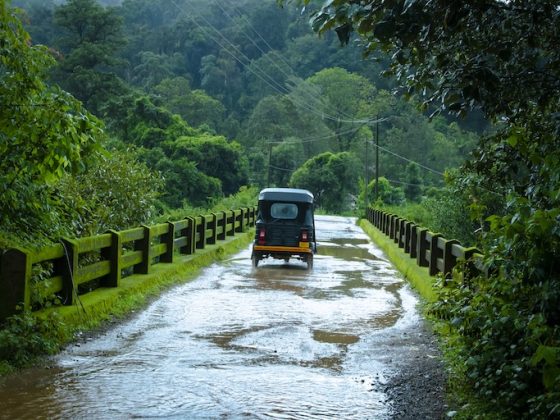The rise of digital nomadism – some estimates put their numbers as high as 40 million today – has transformed how many people work and live. This global trend, in which professionals hop from one destination to another while working remotely, has had a major impact on many cities.
One such place is Chiang Mai, Thailand, which has emerged as a nomad hotspot in Southeast Asia. According to a new study by Australian scholars, Chiang Mai has experienced a surge in nomads since the mid-2010s that has made a massive and potentially lasting impact.
The city’s affordable cost of living and pleasant climate make it an attractive destination. Bringing with them a unique blend of skills, goals, and perspectives, countless nomads have descended and made a major contribution to the local economy and culture.
Economic Boost
Digital nomads are known to spend their money on local businesses, from cafes and restaurants to accommodations and transportation. This spending can significantly boost the local economy. In Chiang Mai, the influx of digital nomads has led to the growth of coworking spaces, coliving facilities, welcoming cafes, and other businesses catering to their needs.
Moreover, digital nomads often hire locals for graphic design, content writing, and translation. This creates job opportunities and helps develop the local talent pool.
Cultural Exchange
Digital nomads bring diversity to local communities. Their interactions with locals can foster cultural exchange and understanding. They often participate in social and professional networking events, allowing them to connect with locals and learn about their culture.
Additionally, digital nomads can inspire locals to adopt new ways of working and living. The Australian study found that many locals in Chiang Mai have been inspired by digital nomads they have met to start their own remote businesses or work from home.
“Digital nomads contribute not just financially, but also leave behind knowledge and open opportunities not previously accessible to the local community,” says Daniel Schlagwein, professor of Digital Work at the University of Sydney.
Challenges and Opportunities
While the benefits of digital nomadism are significant, there are also challenges. One concern is the potential for gentrification, as an influx of digital nomads tends to drive up property prices and rents, making it difficult for locals to afford housing. This is not unique to nomads – much the same can happen with overtourism or when expats arrive en masse.
Another challenge is lifestyle differences combined with the language barrier, which can hinder understanding between digital nomads and locals, creating siloed groups. This seems to be what happened to the Digital Nomad Village on Portugal’s Madeira island, where locals and visitors had trouble connecting and retreated to their own bubbles.
Despite these challenges, the overall impact of digital nomads on cities like Chiang Mai appears to be positive. By attracting skilled workers, boosting the local economy, and fostering cultural exchange, digital nomads can contribute to the growth and development of cities.
Following Chiang Mai’s Example
Other cities around the world are starting to recognize the potential benefits of attracting digital nomads. One example is Czechia’s second city, Brno, which launched an innovation incubator a few years ago and soon started welcoming countless digital nomads, leading to the opening of many coworking spaces.
Another is Porto, Portugal, which has seen a spike in remote workers since housing costs surged in the capital after a wave of post-pandemic expat arrivals. A third is the Indian state of Goa, which is building a large coworking space near the beach and working to convince New Delhi to start offering digital nomad visas.
Working to attract more remote workers, in fact, may be a wise strategy for secondary cities and regions to boost their competitiveness. Some cities are helping their governments develop visa programs for digital nomads, granting them the right to live and work in the country for a specified period.
Additionally, cities are investing in infrastructure and amenities that appeal to digital nomads. This includes high-speed internet, coworking spaces, and cultural attractions. By creating a welcoming environment, cities can position themselves as attractive nomad destinations.
The Role of Digital Nomad Visas
As of October 2024, at least 66 countries around the world offer digital nomad visas, which can play a crucial role in attracting these skilled workers. By providing legal certainty and simplifying immigration, these visas make it much easier for digital nomads to choose their next base of operations.
Yet appealing visas alone are not enough to attract nomads. Cities must also offer a high quality of life, affordable living costs, and opportunities for cultural exchange. As the world becomes increasingly interconnected, the number of digital nomads is sure to rise.
Looking Ahead
The Australian scholars make clear that more research is needed to understand the full impact of this still-developing global phenomenon. But they also make clear that the rise of digital nomadism presents a major opportunity.
Cities and countries able to attract significant numbers of nomads are likely to benefit from their economic contributions and cultural diversity, gaining a leg up in the global competition for talent. As a result, officials should consider implementing policies that support remote workers, invest in infrastructure and amenities, and promote cultural exchange.
By following the example of Chiang Mai, other cities can position themselves as attractive destinations for digital nomads and reap the rewards of this powerful trend. Nomads, meanwhile, should keep in mind the potential negative impact of their presence, and endeavor to tilt the pendulum in the other direction – toward benefiting local communities.
About the Author
This essay is an excerpt from EA Editor David Lepeska’s 2023 book, Desiccated Land.
Contact Author
"*" indicates required fields
Stay Ahead on Every Adventure!
Stay updated with the World News on Escape Artist. Get all the travel news, international destinations, expat living, moving abroad, Lifestyle Tips, and digital nomad opportunities. Your next journey starts here—don’t miss a moment! Subscribe Now!










